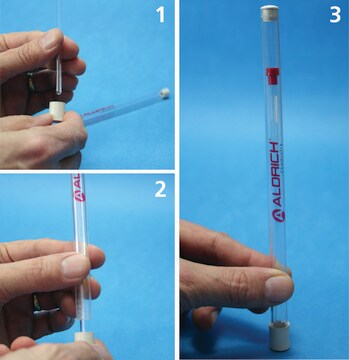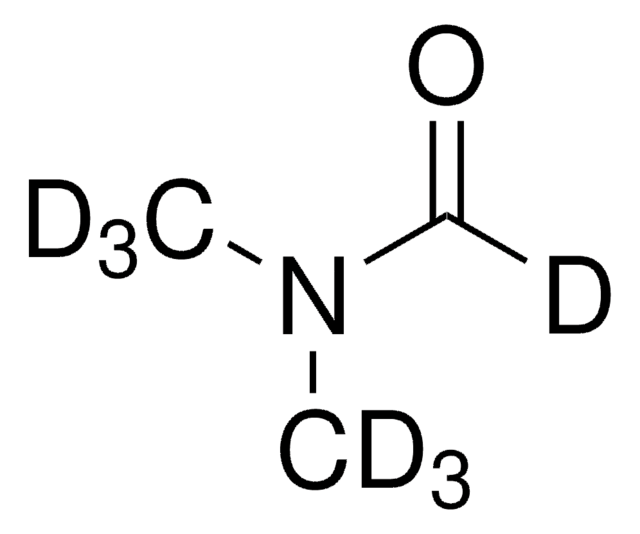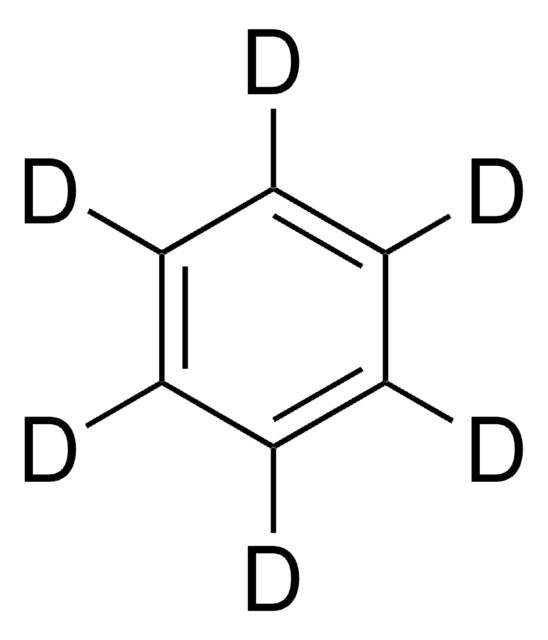570699
Cloroformo-d
≥99.8 atom % D, anhydrous
Sinónimos:
Deuterocloroformo
About This Item
Productos recomendados
grado
anhydrous
Nivel de calidad
pureza isotópica
≥99.8 atom % D
Ensayo
≥99.00%
Formulario
liquid
técnicas
NMR: suitable
impurezas
<10 ppm water
índice de refracción
n20/D 1.444 (lit.)
bp
60.9 °C (lit.)
mp
−64 °C (lit.)
densidad
1.500 g/mL at 25 °C (lit.)
cambio de masa
M+1
cadena SMILES
[2H]C(Cl)(Cl)Cl
InChI
1S/CHCl3/c2-1(3)4/h1H/i1D
Clave InChI
HEDRZPFGACZZDS-MICDWDOJSA-N
¿Está buscando productos similares? Visita Guía de comparación de productos
Categorías relacionadas
Descripción general
Aplicación
Productos recomendados
Palabra de señalización
Danger
Frases de peligro
Clasificaciones de peligro
Acute Tox. 3 Inhalation - Acute Tox. 4 Oral - Carc. 2 - Eye Irrit. 2 - Repr. 2 - Skin Irrit. 2 - STOT RE 1 Oral - STOT SE 3
Órganos de actuación
Central nervous system, Liver,Kidney
Código de clase de almacenamiento
6.1D - Non-combustible acute toxic Cat.3 / toxic hazardous materials or hazardous materials causing chronic effects
Clase de riesgo para el agua (WGK)
WGK 3
Punto de inflamabilidad (°F)
does not flash
Punto de inflamabilidad (°C)
does not flash
Equipo de protección personal
Eyeshields, Faceshields, Gloves
Listados normativos
Los listados normativos se proporcionan para los productos químicos principalmente. Para los productos no químicos sólo se puede proporcionar información limitada. Si no hay ninguna entrada, significa que ninguno de los componentes está en la lista. Es obligación del usuario garantizar el uso seguro y legal del producto.
EU REACH Annex XVII (Restriction List)
Elija entre una de las versiones más recientes:
¿Ya tiene este producto?
Encuentre la documentación para los productos que ha comprado recientemente en la Biblioteca de documentos.
Los clientes también vieron
Nuestro equipo de científicos tiene experiencia en todas las áreas de investigación: Ciencias de la vida, Ciencia de los materiales, Síntesis química, Cromatografía, Analítica y muchas otras.
Póngase en contacto con el Servicio técnico







